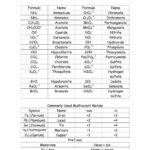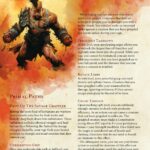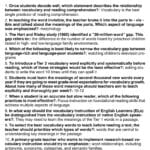Ever found yourself at the D&D table, wrestling with a tough decision for your character? Wondering if your noble paladin would really break an oath, or if your rogue would actually show a flicker of compassion? Understanding your character’s D&D alignment is key to navigating these moral dilemmas and breathing life into your roleplaying. This guide and quiz will serve as your compass, exploring the fascinating world of Lawful Good, Chaotic Evil, and everything in between. We’ll dissect the nine alignments, clarify recent changes to the system (did D&D really ditch alignment?), and offer a helpful test to discover where your character—or even you—falls on the spectrum of good and evil. So, grab your d20 and prepare to explore the depths of D&D alignment!
Unmasking Your Character’s Morality: The D&D Alignment System
D&D alignment is like a character’s moral fingerprint—a shorthand for their deepest values and beliefs. It’s more than just a label; it’s a framework that influences their decisions, interactions, and ultimately, their destiny within the game. This framework traditionally uses two axes: Law vs. Chaos, reflecting a character’s view on rules and structure, and Good vs. Evil, indicating their moral compass.
Embarking on Your Alignment Quest: Quizzes and Beyond
Finding your character’s alignment isn’t about randomly picking a label. It’s a journey of self-discovery, and there are numerous tools to guide you. Many online resources offer D&D alignment tests, from rapid-fire quizzes to in-depth questionnaires. Websites like EasyDamus and AideDD provide dedicated alignment tests, while others like ARealMe and IDRlabs offer variations inspired by the D&D system. Even exploring videos on YouTube, such as “D&D Alignments Explained: The Real Answer,” can deepen your understanding. Remember, each test might have a different approach, but the goal remains the same: to pinpoint your character’s place within the nine alignments.
Here’s a quick overview of the nine alignments:
| Alignment | Law vs Chaos | Good vs Evil |
|---|---|---|
| Lawful Good | Order | Good |
| Neutral Good | Neutral | Good |
| Chaotic Good | Chaos | Good |
| Lawful Neutral | Order | Neutral |
| True Neutral | Neutral | Neutral |
| Chaotic Neutral | Chaos | Neutral |
| Lawful Evil | Order | Evil |
| Neutral Evil | Neutral | Evil |
| Chaotic Evil | Chaos | Evil |
Decoding Your Results: A Starting Point, Not a Straitjacket
No alignment test is a perfect predictor of your character’s every action. Think of the results as a suggestion, a starting point for exploration. Did you get Lawful Good, a champion of justice? Or perhaps Chaotic Evil, a devotee of chaos? That’s excellent! But don’t feel confined. Use the result as a lens to understand your character better, not a rigid box. Your Lawful Good character might bend the rules for a greater good, while your Chaotic Evil character could display unexpected moments of compassion. This nuance is where the fun begins!
Bringing Alignment to Life: Actions Speak Louder Than Tests
So, you’ve taken a test. Now what? How does alignment translate to gameplay? Imagine a Lawful Good paladin encountering a starving beggar. They’d probably offer aid, driven by compassion and a sense of duty. Now picture a Chaotic Neutral rogue in the same scenario. They might see an opportunity to pickpocket the beggar or use the distraction to slip away. Different motivations lead to vastly different actions. Alignment influences everything from problem-solving and dialogue to spell choices and deity selection.
Delving Deeper: A Guided Exploration of Your Alignment
Let’s move beyond the basics and delve into the complexities of alignment. This isn’t a simple “good vs. evil” dichotomy. There are layers of nuance to explore.
The Alignment Gauntlet: Facing Moral Dilemmas (Part 1)
Consider these scenarios and choose the response that best reflects your character’s instincts.
Scenario: Your friend, facing starvation, steals bread for their family. What do you do?
- A: Turn them in. Stealing is wrong, and the law must be upheld.
- B: Help them hide. Mercy outweighs the law in this situation.
- C: Seek alternative solutions, like a local charity, balancing compassion and legality.
Scenario: You find a lost purse overflowing with gold. What’s your next move?
- A: Immediately try to find the owner. It’s the right thing to do.
- B: Keep it. Finders keepers!
- C: Donate the gold anonymously. You don’t need it, and someone else does.
Navigating Moral Minefields: More Complex Choices (Part 2)
Let’s explore more intricate scenarios.
Scenario: You discover a powerful artifact, promising immense strength but whispering of corruption. What do you do?
- A: Resist. Power corrupts, and the risk is too great.
- B: Seize it. Power is everything.
- C: Use it cautiously, striving to harness its power for good while resisting its influence.
Scenario: Your party faces a difficult moral dilemma with no easy answers. What guides you?
- A: Adhere to a strict code of conduct, regardless of the outcome.
- B: Follow your instincts, even if it means bending the rules.
- C: Seek a compromise, balancing principles and practicality.
Interpreting Your Responses: Unraveling the Clues
Mostly A’s suggest a Lawful nature, valuing order and rules. Mostly B’s might indicate a Chaotic leaning, prioritizing freedom and individuality. Mostly C’s likely signify a Neutral tendency, seeking balance.
Next, consider your motivations. Were you driven by compassion (Good)? Self-interest (Evil)? Or a blend of both (Neutral)? Combining these tendencies helps pinpoint your alignment. For instance, mostly A’s with compassionate motivations could indicate Lawful Good. Mostly B’s with selfish choices might point towards Chaotic Evil. Remember, these are just starting points.
Beyond the Quiz: Embracing Nuance and Evolution
This quiz is just a stepping stone. True alignment emerges through in-game actions. Consider real-world figures or fictional characters embodying different alignments. A dedicated judge might exemplify Lawful Good. A ruthless dictator could be considered Lawful Evil. How would they approach these scenarios? Visualizing this helps understand the nuances. D&D alignment isn’t static. A Lawful Good character may become more Neutral after witnessing corruption. Embrace this potential for growth.
Deconstructing the Nine Alignments: A Spectrum of Morality
Let’s break down the nine alignments, exploring their core principles and how they manifest in the D&D world.
The Two Pillars: Law vs. Chaos and Good vs. Evil
Alignment rests on two fundamental axes. Law vs. Chaos reflects how a character views rules and structure. Lawful characters value order, while Chaotic characters embrace freedom. Good vs. Evil represents a character’s moral compass. Good characters strive to help others, while Evil characters prioritize self-interest. Neutral characters fall somewhere in between on both axes.
The Nine Shades of Morality: Each Alignment Defined
Combining these axes creates the nine alignments:
| Alignment | Description | Example |
|---|---|---|
| Lawful Good | Champions justice and order, always striving to do what’s right. | A knight upholding a sacred oath. |
| Neutral Good | Kind and compassionate, helping others without being strictly bound by rules. | A healer tending to the sick, regardless of their background. |
| Chaotic Good | Driven by justice, willing to break rules for a greater good. | A revolutionary fighting for freedom from oppression. |
| Lawful Neutral | Values order and tradition above all else, regardless of their moral implications. | A judge who applies the law impartially, even if it leads to harsh consequences. |
| True Neutral | Seeks balance and avoids extremes, often prioritizing self-preservation. | A hermit seeking solitude and detachment from worldly affairs. |
| Chaotic Neutral | Values personal freedom above all else, following their whims and impulses. | A wandering adventurer driven by curiosity and a thirst for excitement. |
| Lawful Evil | Exploits rules and systems for personal gain, often at the expense of others. | A corrupt official manipulating laws for personal profit. |
| Neutral Evil | Primarily self-serving, willing to harm others if it benefits them. | A mercenary caring only for their reward. |
| Chaotic Evil | Driven by impulse and destruction, reveling in chaos and suffering. | A tyrannical warlord driven by a lust for power and destruction. |
Navigating the Moral Maze: Finding Your Place
While quizzes offer a starting point, true alignment unfolds through choices and actions. Imagine yourself in various moral dilemmas. How would you react? Your responses can suggest an alignment, but it’s a journey of self-discovery, both for you and your character. Some scholars believe these nine alignments could oversimplify the complexities of human morality. It’s certainly a topic ripe for discussion!
The Evolution of Alignment: Debunking the Myths
The D&D alignment system has undergone changes, particularly in recent editions. Let’s clarify some common misconceptions.
Did D&D Abandon Alignment? Not Quite.
D&D didn’t discard alignment entirely. Instead, they revamped it, offering greater flexibility and nuance. Previously, certain races had suggested alignments, which could perpetuate stereotypes. This has been removed, giving players more agency. You can now play a noble orc or a selfish elf, defying traditional tropes.
From Rigid Rules to Fluid Guidelines
The nine alignments still exist, providing a moral framework. However, the emphasis has shifted from strict adherence to interpretation. Alignment now serves as a guide, not a set of shackles. It influences roleplaying and some game mechanics, like paladin oaths or certain spells, but with more room for individual interpretation.
The Community’s Verdict: A Mixed Bag
These changes have been met with varied reactions. Some players appreciate the increased freedom, while others miss the traditional structure. The future of alignment in D&D remains to be seen. It might further evolve or gradually fade into the background.
The Takeaway: Embrace the Freedom, Explore the Depths
Ultimately, D&D alignment is a tool for enriching your roleplaying experience. Whether you’re a seasoned player or a newcomer, use it to explore your character’s inner world, their motivations, and their moral compass. Embrace the freedom to create complex and nuanced characters, and let their actions define their place in the D&D multiverse. Streamline your adventures with Anoka County Court Administration and delve into the financial details with the Ashtabula County Auditor.
- Revolution Space: Disruptive Ion Propulsion Transforming Satellites - April 24, 2025
- Race Through Space: Fun Family Game for Kids - April 24, 2025
- Unlocking the Universe: reading about stars 6th grade Guide - April 24, 2025
















